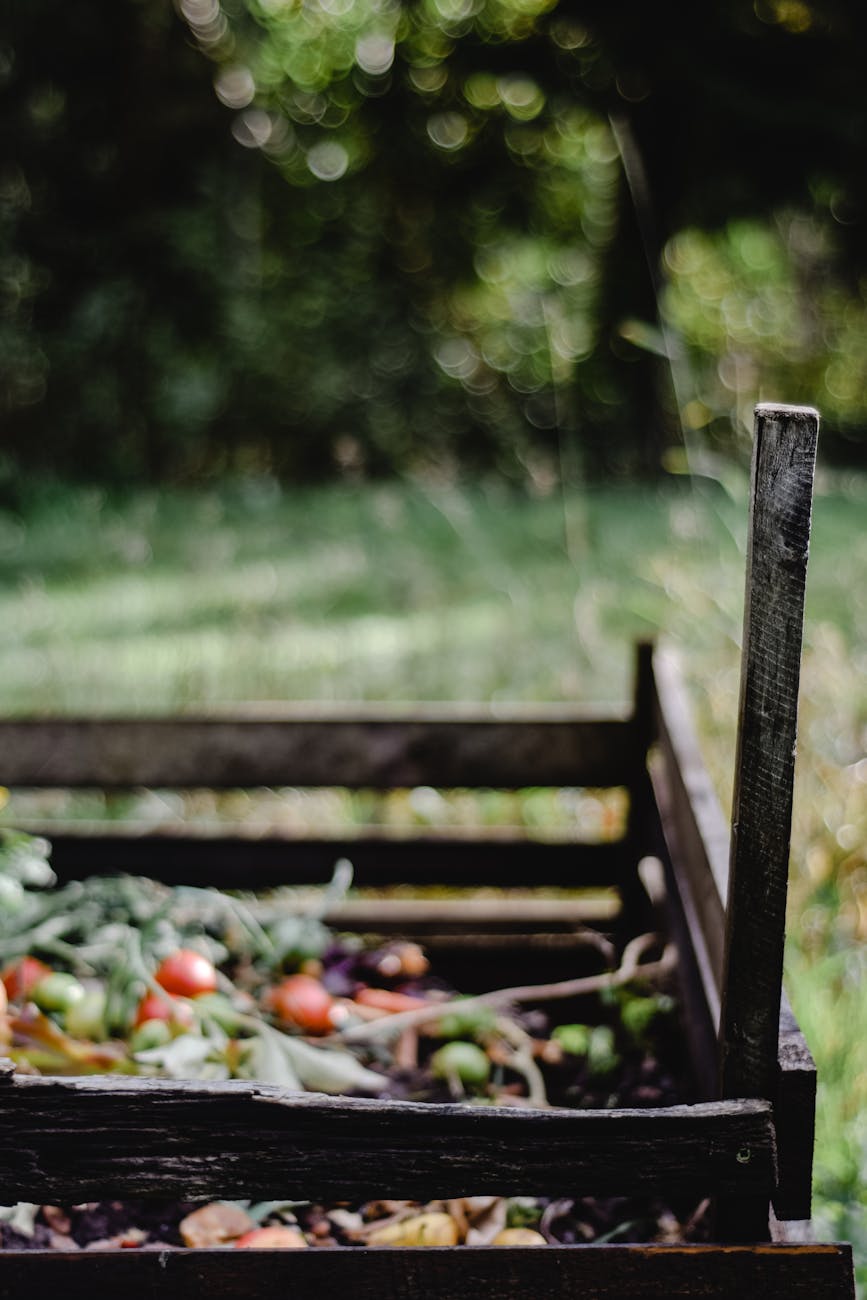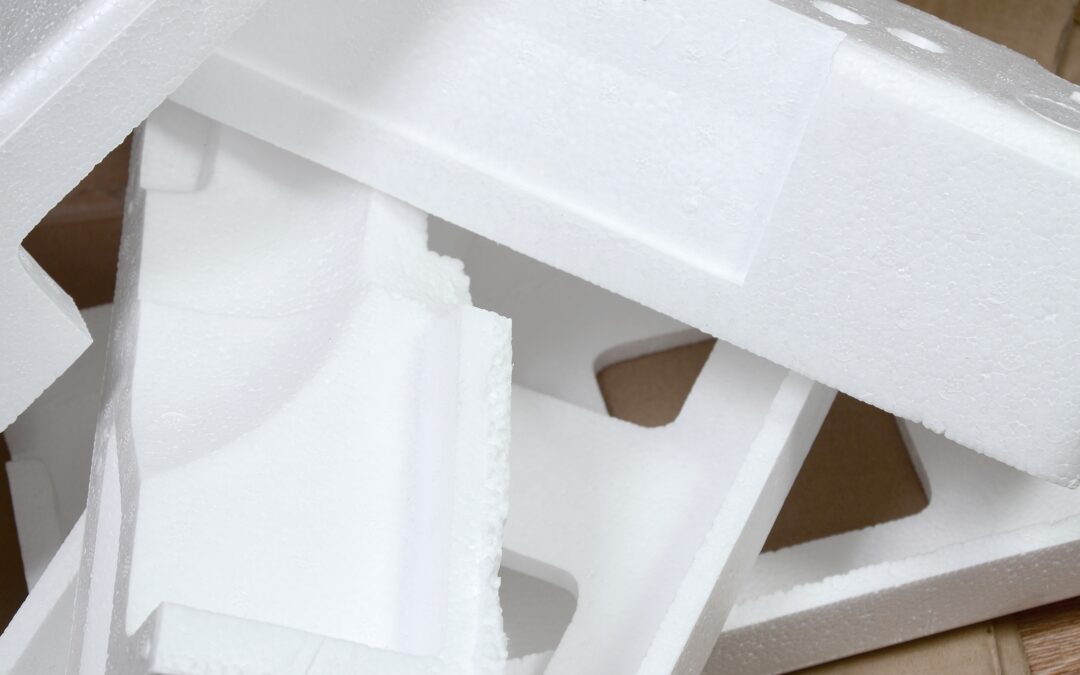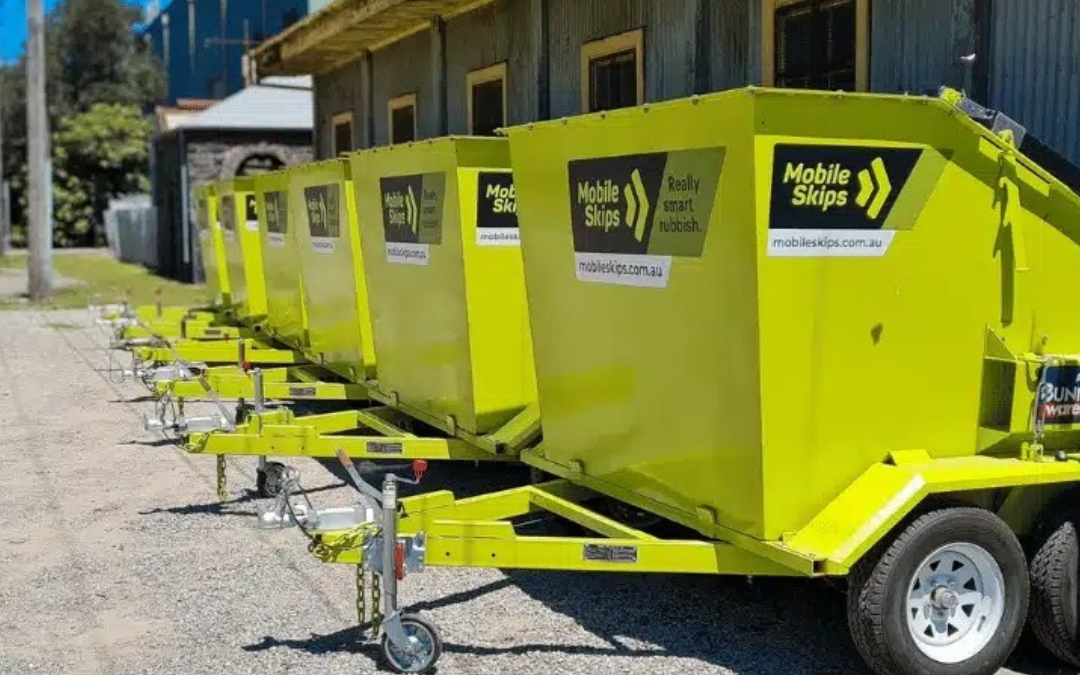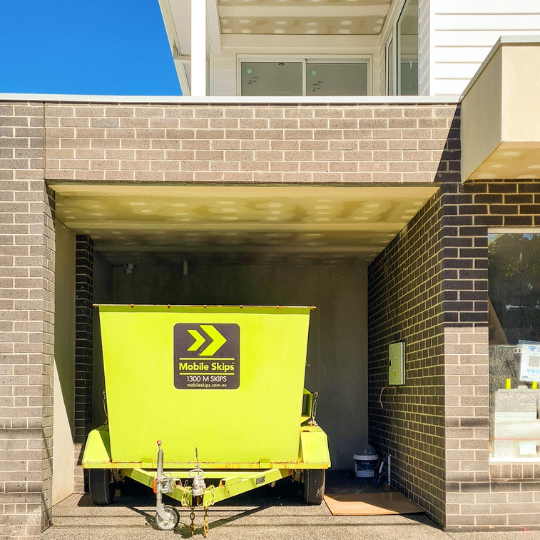Why Efficient Space Usage in Skip Bins is Important
Making the most out of the space in your green waste skip bin is like hitting a gardening jackpot. It ensures a lot more ease when you don’t have to constantly shuffle to recycling centres or landfill sites. Plus, think of it as a round of applause for reducing carbon footprints. This way, ditching organic waste turns into a breeze, leaving you more time to dive into your gardening passion without a hitch.
Overview of Green Waste Skip Bins and Common Challenges
Green waste skip bins are your go-to for dumping all things organic. They’re the magic bins that gobble up garden debris like grass clippings, branches, leaves, and shrubs. Think of them as the garden cleanup crew, batting for recycling and giving organic stuff a second lease on life. Curious about what fits the bill as green waste? Our nifty guide on what is green waste has got the deets.
Yet, managing these bins has its own pandora’s box of headaches. The pesky problem of overloading can pop up, and that’s a shortcut to safety hazards or fines waving at you from waste companies. Knowing your fill line and weight limit is like having a good map—keeps you out of trouble and your skip bin game going strong.
There’s another pickle—space, or the lack thereof. Big guys like branches can be greedy space-eaters, and before you know it, you’re left with no room to breathe. Taming this beast requires a little forward-thinking, like breaking down and arranging your green waste smartly.
| Key Challenges | Suggested Solutions |
|---|---|
| Overloading | Check out fill lines and weight limits |
| Inefficient Space Usage | Chop down the big stuff and layer like a pro |
| Mixed Waste | Keep it strictly green stuff in the bin |
By sticking to these moves and keeping an eye on fill lines, you can stretch every somethin’ outta nothin’ with your green waste skip bin. It’s about saving bucks and giving Mother Nature a little hug. If things are getting outta hand and you might need another bin, our part about when to think about a second skip bin has all you need.
Wanna find the ultimate skip bin match for your green waste? Peek at our insights on the best skip bins for green waste to score the ideal pick. If safety’s on your radar, our pieces on skip bin sizes for garden projects and green waste skip bins after storm are worth a look-see.
Plan Before You Fill
Good planning’s your best buddy when it comes to wrangling all that green waste and stuffing it into a skip bin. You’ve got to prepare smartly to squeeze every last bit of space out of it and make sure you’re not pulling your hair out when it’s time to get rid of it all.
Assess the Amount and Type of Green Waste
Before you start chucking stuff into your skip bin, take a moment to size up what you’re dealing with. Figure out how much waste and what kind’s on your hands. This helps you pick the right bin size so you don’t end up with a mountain you can’t move.
| Type of Green Waste | Examples |
|---|---|
| Big Stuff | Tree branches, bits of shrubs |
| Little Stuff | Grass clippings, leaves, teensy twigs |
| Mixed Bag | A mix of big and little stuff |
Once you know what’s what, you can think about how to pack it all in. Grass clippings and leaves love a good squish, but branches might need a good old chop to fit right. Checking this lot also keeps you in the good books with local council rules about what you can chuck in a skip.
Separate Bulky and Smaller Items for Better Packing
Having figured out what you’re dealing with, it’s time to split up the big from the small. This makes the packing easier and lets you pile up that bin like a pro.
- Big Stuff:
- Big old branches
- Shrub bits
- Chunks of tree trunks
- Little Stuff:
- Grass bits
- Leafy bits
- Tiny twigs
Start by plonking the biggest bits at the bottom of the bin. This sets you up with a sturdy base and leaves space for the smaller stuff to get comfy on top. For more cunning tricks on managing hefty garden bits, give our article a look.
Sorting your green waste isn’t just tidy, it’s smart. In Australia, they love turning green waste into compost through shredding and letting it cook for a good few months. The end product then goes on to help things grow or heads off to farms.
So, there you have it! Plan your attack, pack your skip bin like a boss, and make sure your waste journey’s smooth and planet-friendly. Looking for more crafty tips on dealing with green waste? Head over to our section on how composting can be your next best mate.
Break Down Large Garden Waste
When dealing with a heap of garden mess, turning those pesky big branches and clumps of leaves into manageable bits is the real trick. This is especially handy when you’re trying to make the most out of a green waste skip bin. Let’s get into the nitty-gritty of slicing those large branches, squashing the leaves and grass, and the perks of doing it all.
Cutting Large Branches and Trimming Shrubs
Big ol’ branches and bushy shrubs hog a lot of room in your skip bin. By chopping them into small, stackable bits, you’ll be cramming more in. Trusty tools like saws work wonders on beefy branches, while secateurs are perfect for those skinny twigs. Tuck them neatly into the bin and watch your space grow.
- Thick Branches: Grab a saw, break ’em down.
- Thinner Branches/Shrubs: Snip with secateurs, and don’t hold back.
If you have a table saw handy, that’s even better for making those cuts precise and easy to stack.
Compacting Leaves, Grass, and Smaller Debris
Leaves and grass and all those tiny twigs? They’re sneaky space hogs. To keep them in check, press those piles like they’re going out of style.
- Leaves: Stack ‘em up and squish ‘em down.
- Grass Clippings: Bag it, squish it.
- Small Debris: Gather twigs, press them down before tossing in.
For some pro tips on dumping grass clippings, mosey over to our article on grass clippings disposal.
| Waste Type | Initial Volume | Post-Compaction Volume |
|---|---|---|
| Leaves | 10 bags | 5 bags |
| Grass Clippings | 7 bags | 3 bags |
| Small Debris | 5 bags | 3 bags |
How Breaking Down Green Waste Helps Maximize Space
Shrinking down your garden waste has its perks:
- Efficient Space Use: Tinier pieces snuggle in, filling empty spots.
- Even Distribution: Weight spreads evenly, no more leaning towers.
- Ease of Transport: Easier to haul around and less hassle unloading.
Going this route not only jazzes up your green waste removal but also tips the hat to eco-friendly waste handling (Mobile Skips).
Giving the green waste the ol’ chop-chop makes your time with skip bins for garden projects a breeze, ensuring you’re not just chucking but smart stacking every bin load. For more on making garden waste less of a pain, check out our helpful guides on skip bins tree shrub removal and best skip bins for green waste.
Layering Your Green Waste Efficiently
Stacking your green waste in the skip bin like a pro is key to using the space well and making sure everything’s tossed away safely. Let’s break down the best way to stack it all:
Start with Larger Items at the Bottom
First thing, chuck the big stuff in your green waste skip bin. This sets up a strong base and spreads out the weight so nothing topples over. Bigger bits like branches, chunks of old wood, and thick bush stems go in first. They’re bulky, so squish ’em down so there’s heaps more room as you keep filling.
Fill Gaps with Smaller Debris and Leaves
After the biggies are in place, slide the small stuff into the nooks and crannies. This’ll make sure you’re not wasting any space. Think grass, little twigs, and heaps of leaves – they’re perfect for plugging the gaps. This trick makes sure every bit of space is put to use, squeezing more into the skip.
Stack Branches and Twigs in the Same Direction
Make sure branches and twigs are all going the same way when you add them. Saves a heap of room and keeps everything snug and easy to move. This way, nothing slides around when the bin’s getting carted off, cutting down on the chance of anything messy happening on the road.
| Type of Green Waste | Where It Goes in the Bin |
|---|---|
| Large branches | Bottom |
| Timber pieces | Bottom |
| Shrub stems | Bottom |
| Grass clippings | In every little gap |
| Twigs and leaves | In every little gap |
Nailing the way you layer your green waste not only helps you fill up the bin to the brim but also keeps everything tight and tidy. Stick to these tips, and getting rid of your green waste will be a breeze. If you want more deets about the perfect bin for your garden jobs, check out our info on skip bin sizes for garden projects.
Avoid Overloading or Improper Filling
Understanding the Fill Line and Weight Limits
Before you cram everything into your green waste skip bin like you’re playing Tetris, it’s important to respect that fill line and weight limit. Overstuffing can lead to all kinds of hassles—like safety risks, extra fees or maybe even having your bin abandoned at the curb. Look for that handy line on your bin, showing just how full it should get.
Picture your typical 3 cubic metre skip bin – this little fella can carry around 1.5 tonnes. To give you an idea, that’s like squeezing in 30-40 hefty garbage bags or clearing out a room or two of clutter (ABC Skip Bins Brisbane). Pack it too heavy, and you’re looking at problems with moving it or even fines.
Here’s how to avoid those pitfalls:
- Keep everything below the fill line—no exceptions!
- Green waste bins aren’t for things like big tree stumps, soil, or building leftovers.
- Spread the weight out evenly in the bin so it doesn’t tip or break during transport.
Tips to Prevent Overloading and Ensuring Safe Transport
To make sure everything goes smoothly with your green waste skip bin, try these out:
Separate and Compact Waste
- Break Down Big Stuff: Start with these behemoths at the bottom. If they’re too big, get your tools out—saws and shears are your friends for cutting branches and taming unruly bushes. Check out more tips over at our skip bins tree shrub removal.
- Smush the Small Stuff: Squash leaves and grass with a rake to make them compact. Fill gaps with this smaller stuff and use your space smartly.
Layering and Organizing
- Play Jenga: Stack the big items at the bottom and sneak smaller bits into gaps. Line up branches and twigs the same way to use space better.
- Spread the Load: Make sure heavy items are placed all over the bin, so things don’t get wonky and tip over.
Monitor Fill Line and Weight
- Watch That Line: Keep an eye on where your fill line is and stop once you hit it.
- Mind the Weight: Keep track of how much everything weighs. Remember, 3 cubic metre skips hold about 1.5 tonnes—don’t go overboard!
| Skip Bin Size | Approximate Weight Capacity | Equivalent Garbage Bags |
|---|---|---|
| 2 cubic metre | 1 tonne | 20-30 |
| 3 cubic metre | 1.5 tonnes | 30-40 |
| 4 cubic metre | 2 tonnes | 40-50 |
Sticking to these tips means no overloading and safer travels for your bin. If you’re knee-deep in more waste than you thought, maybe think about getting a second bin. It’s a good way to handle big projects without cramming too much into one bin. Curious about tackling massive jobs? Our article on projects that might need more than one bin is worth a read.
When to Think About Another Skip Bin
Sometimes one skip bin just doesn’t cut it, especially when your garden project is on the hefty side. Knowing when you might need a second skip bin can save you heaps of stress.
Projects That Might Need More Than One Bin
Some garden work will snowball into a mountain of waste. Here’s when you might need an extra bin:
- Big Garden Overhauls: Imagine chopping down old trees and getting rid of those massive bushes. Before you know it, you’re drowning in green waste. Check out our read on skip bins for landscaping projects if you’re taking on big stuff.
- Seasonal Tidy-Ups: Spring and autumn are notorious for cluttering up your yard with leaves and branches. Learn more in our seasonal garden clean-up skip bins guide.
- Crazy Weather Clean-ups: Storms can bring down branches and all sorts of debris. A single bin might choke on it all. Our article on green waste skip bins after storms has tips for these events.
- Home Makeovers: Knocking down walls or building new bits on your house can lead to piles of building rubble and garden offcuts.
| Task | Skip Bin Size (Cubic Metres) |
|---|---|
| Big Garden Overhaul | 8 – 10 |
| Seasonal Tidy-Ups | 6 – 8 |
| Post-Storm Cleanup | 8 – 10 |
| Home Makeover | 8 – 10 |
Why Renting More Than One Bin Helps
There’s some real perks to having several bins on the go, particularly when your garden project isn’t a small fry:
- Smarter Waste Sorting: Splitting waste types into different bins can help with disposal and recycling. Our recycling green waste guide gives you the lowdown.
- Keeping It Safe: Avoid overloading by not exceeding the weight and fill limits, making sure your trash gets taken away without a hitch. Dive into our article on understanding the fill line and weight limits.
- Waste Disposal Flexibility: More bins mean you can take your time with waste removal rather than cramming it all in.
- Might Save You Money: Believe it or not, getting several right-sized bins might actually be cheaper than copping fees for overloaded ones. Our guide on skip bin sizes for garden projects tells you more.
For the super flexible, consider skip bags; keep them around for as long as you need without the rush.
Being switched on about your project needs means you’re not caught off guard with bin requirements. More insights can be found in our what is green waste guide.
Benefits of Using Mobile Skips
See why grabbing a mobile skip could be your best move for breezy green waste removal. Discover how these handy helpers can turn a garden clutter crisis into a neat and tidy plot, all while following the local do’s and don’ts.
4 Cubic Metre Skip Bins Perfect for Compact Green Waste Disposal
Stuck with a jungle of twigs and grass? Mobile skips, especially the 4 cubic metre kind, are just what you need. They’re a lifesaver for snug spots—ideal for squeezing into driveways and gardens. Whether you’re tackling lawn cuttings, fallen branches, or snipping away overgrown shrubs, this skip’s got the room you need to toss things away without fuss.
| Skip Size | Ideal For | Capacity (cubic metres) |
|---|---|---|
| 4 Cubic Metre | Compact Green Waste Disposal | 4 |
With mobile skips, you’re cutting down on time and pollution from endless runs to the dump or recycling center. Wondering more on this? Check out our deep dive into best skip bins for green waste.
No Council Permits Required
A great perk of mobile skips for your green chaos is ditching the paperwork. Generally, no council permit needed here. Unlike their bulkier brothers, mobile skips chill happily on your turf—be it the backyard or driveway. This saves you the headache of chasing permits or bending to complex rules. Curious? Head over to local councils green waste management for further info.
Convenient Placement in Your Backyard or Driveway
The bliss of popping mobile skips in your backyard or driveway? It’s a breeze! Shorter walks to dump your green stuff mean tidy spaces quicker. Their design allows easy peasy drop-off and pick-up, streamlining the waste shuffle.
For projects threatening to exceed one bin’s capacity, don’t sweat it—ordering a fleet of skips is just as simple. Curious about your options? Dig into our guide on skip bin sizes for garden projects.
Summary of Benefits
- Space-Smart: Nestles neatly into tight spots like a puzzle piece.
- Hassle-Free: No council permits bugging your peace.
- Placement Perks: Handily lands in backyards or driveways.
Relying on mobile skips for green waste isn’t just about a tidier home; it echoes caring for our planet. For more smarts, check out what is green waste and skip bins vs green waste services.
Conclusion
Final Tips on Making the Most of Your Green Waste Skip Bin
So, you’re ready to tackle the green stuff in your garden, huh? Here’s how to get the best out of your green waste skip bin:
- Think Ahead: Check out what kind and how much garden mess you’re dealing with before you start.
- Chop It Up: Snip big branches and trim those bushy plants to fit snugly.
- Layer Like Lasagna: Chuck the bigger bits at the bottom and squirrel away leaves and smaller bits in the gaps.
- Straighten Up: Point all the branches and twigs the same way for max space use.
- Watch the Line: Don’t go over the fill line, and with the weight, think Goldilocks—not too heavy.
- More Bins, Less Trouble: Got a big job? Grab more than one skip—even a giant project can’t throw you off track.
Keeping a tidy space by handling green waste right keeps Mother Nature smiling. For insider info on different green waste types and handling tricks, swing by what is green waste.
Why Mobile Skips Fits the Bill for Spot-on Green Waste Disposal
Mobile Skips is where it’s at for green waste cleanup (Mobile Skips):
- Just Right Size: Their 4 cubic meter skips are spot on for compact can-reach spaces.
- Skip the Red Tape: Pop one of these bins in your backyard or driveway with zero council paperwork to hassle about.
- Time and Penny Saver: Mobile Skips mean fewer runs to the tip—more time in your pocket, less smoke in the sky.
- Fast and Easy: Bins delivered swift as you like, making cleanup easy-peasy (Mobile Skips).
Using Mobile Skips doesn’t just simplify cleanup, it turns garden waste handling into a breeze, leaving you with a spick-and-span space. Need more reasons? Check out the benefits of green waste.
Curious about more on dealing with green waste? Dig into our reading on green waste removal and how to grab the right skip bins for seasonal garden tidy-ups.






